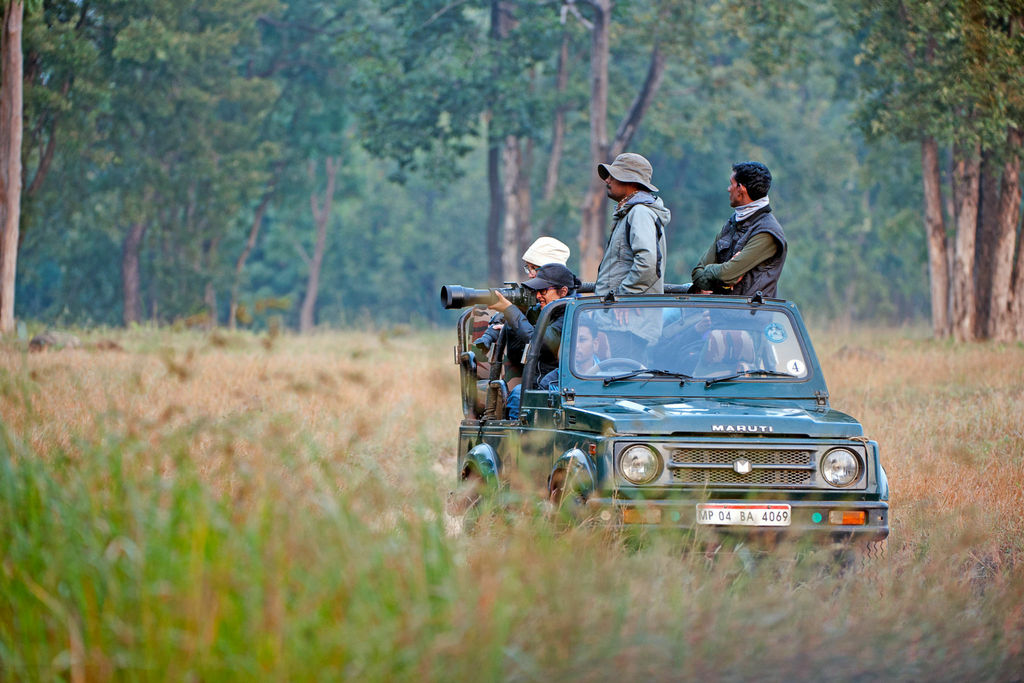
GURGAON, HARYANA, INDIA, January 17, 2024 /EINPresswire.com/ — The tiger holds the distinction of being the largest cat in the world and stands as one of the most sought-after animals on a wildlife safari. While most animals tend to keep their distance from humans, tigers, on occasions due to illness, injury, or perhaps lack of experience, might pose a threat to human life, particularly villagers venturing into forests in search of resources.
It’s ingrained in the tiger’s nature that humans walking upright are not their natural prey, and maintaining distance is deemed safe for both parties. Some conservationists suggest that the extensive hunting of tigers during the Mughal and British eras may have taught these creatures to steer clear of humans. Nevertheless, there are instances when tigers can pose a danger, particularly concerning tourists. To prevent such situations, the forest department has established a set of guidelines for guides and drivers accompanying tourists. These rules prioritize the safety of both tigers and tourists.
In this article, we aim to share these safety measures, ensuring that tourists can enjoy their safari without fear.
Ensuring Safe Tiger Safaris in India with Stringent Safety Measures
1. Park Entry Regulations and Safety Guidelines for Safe Tiger Safaris in India: Every tiger reserve falls under the jurisdiction of the National Tiger Conservation Authority (NTCA), responsible for making decisions on various administrative matters, including tourism regulations that apply to all reserves. However, certain specific issues, such as park entry regulations and safety guidelines, are determined at the local level. Each tiger reserve operates within specified opening and closing times, which are aligned with the Indian Standard Time zone. The timing varies based on the reserve’s geographical location.
Reserves situated in the eastern part of India typically allow early entry, but the exit time in the evening is correspondingly earlier. Conversely, reserves in central India often have later entry and exit timings. Access to the reserve is permitted after the first rays of sunlight and concludes before sunset. This schedule ensures that tourists can enjoy wildlife during their safari without causing significant disruption to the animals’ natural behaviors.
Strict safety guidelines are in place for tourists, guides, and drivers, which must be adhered to without exception. These guidelines not only prioritize safety in encounters with wildlife but also encompass measures for safe driving within the reserve premises and other precautionary measures. This comprehensive approach aims to ensure a safe and enjoyable experience for visitors while respecting and protecting the natural habitat and its inhabitants.
2. Implementation of Advanced Tracking Systems Ensuring Safe Tiger Safari in India: All safari vehicles operating within these reserves are equipped with GPS technology. In instances where this isn’t available, guides carry GPS devices to ensure continuous tracking of vehicles. This technology serves two critical purposes: firstly, it monitors vehicles to ensure they adhere to designated speed limits, and secondly, it aids in tracking them in case of emergencies.
Maintaining control over vehicle speed is crucial for the safety of tiger safaris. Speeding vehicles can pose significant risks, especially considering the unpredictable nature of wildlife. Sudden appearances of animals or the undulating terrain within the reserve could potentially cause accidents or lead to passengers being thrown out of the vehicle.
At the exit gate of the tiger safari, an individual is responsible for monitoring all vehicles returning from the safari. If any vehicle is unaccounted for, the gatekeeper initiates a series of actions to locate them. Initially, attempts are made to contact the missing vehicle’s occupants via phone. If no mobile phone signal is available or if there is no response, the tracking process begins using the GPS devices provided by the department. This systematic approach ensures the safety and accountability of all safari participants, preventing potential mishaps within the reserve.
3. Experienced Guides and Drivers/ Naturalists: During safaris, ensuring the safety of tourists falls under the responsibility of the experienced guides and drivers. These professionals undergo extensive training to effectively manage any potential emergency situation. Many of them have been raised in these forested areas, granting them an intimate familiarity with the terrain and a deep understanding of animal behavior within these habitats.Their expertise becomes evident as they possess an acute sense of detecting potential dangers. In the event of any perceived threat, these guides and drivers swiftly maneuver the vehicles away from risky situations, prioritizing the safety of the tourists on board. Their ability to anticipate and respond to wildlife behavior adds a layer of reassurance to the safari experience.
Recognizing the importance of continuous learning and skill enhancement, the forest department regularly organizes refresher courses for these guides and drivers. These sessions are designed to update them on the latest technologies, safety protocols, and developments in wildlife studies. This ongoing training ensures that these professionals remain abreast of advancements in their field and are well-prepared to handle any situation that may arise during a safari, further enhancing the safety and experience of tourists exploring these natural habitats.
4. Role of Guides/ Naturalists in Visitor Safety and Wildlife Preservation during Tiger Safaris in India: Guides or naturalists serve as the cornerstone of the tiger safari experience in India. They play a pivotal role as ambassadors of wildlife tourism within the reserve, acting as crucial intermediaries between the reserve’s natural wonders and the visiting tourists. Beyond this, they hold a multifaceted position as the eyes and ears of the forest department during tiger safaris.
Their duties extend beyond merely guiding tourists through the wilderness. These knowledgeable individuals actively participate in wildlife and habitat management whenever the need arises. They often accompany regular forest department personnel on patrols and contribute to efforts aimed at controlling forest fires. During safaris, ensuring the safety of tourists becomes a primary responsibility for these guides or naturalists. Their profound understanding of the forests, combined with their expertise in wildlife behavior, equips them to manage and mitigate any emergency situation that may arise during the tiger safari.
Sharad Vats
Nature Safari India
email us here
Visit us on social media:
Facebook
Twitter
Instagram
YouTube
![]()
Originally published at https://www.einpresswire.com/article/681831749/are-tiger-safaris-safe-in-india-safety-in-indian-national-parks





